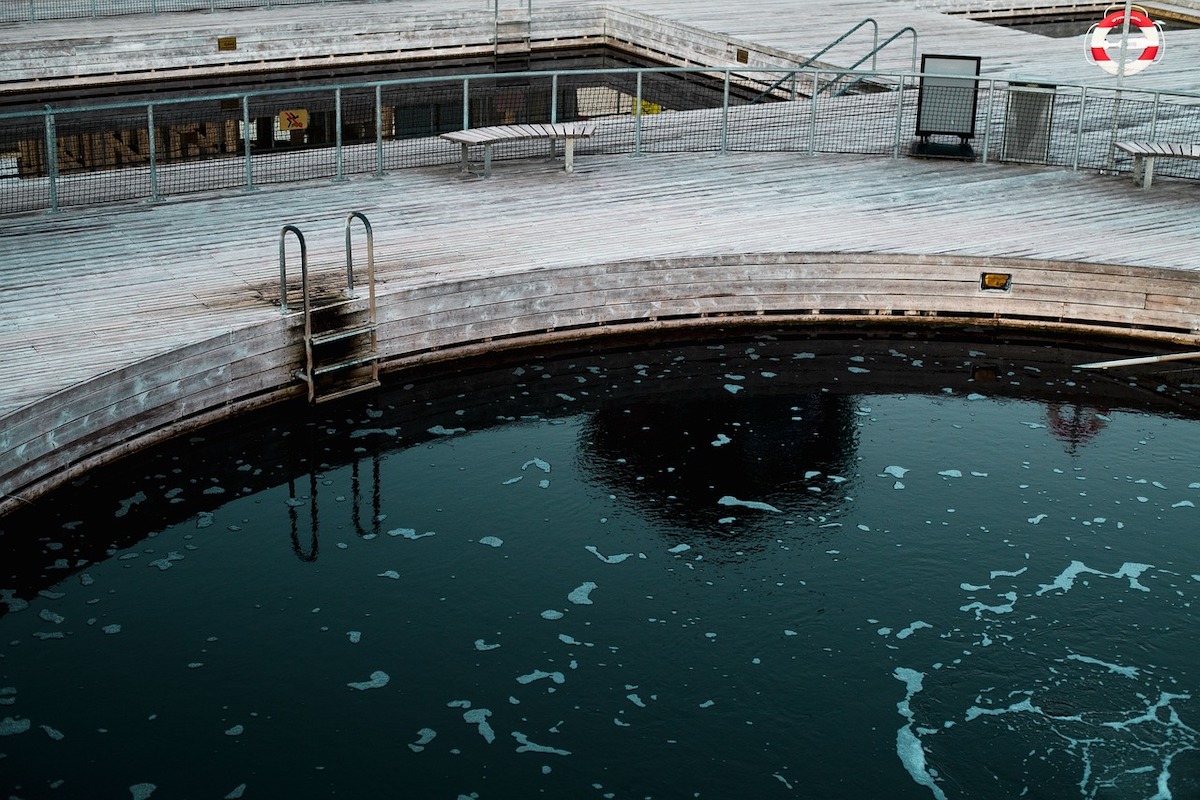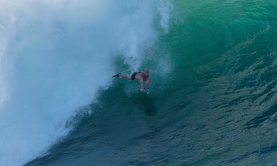

Cold-water plunges have a myriad of benefits, but the ones I hear about most often are related to mental health. While I’m far from an expert in winter swimming, I’ve felt that rush of adrenaline that comes from jumping into 40-degree water, and the feeling of warmth and joy that follows once you’re back on dry land. It’s kind of impossible to think about that email you haven’t responded to yet, that text you need to send, or that awkward meeting from the day before when your body is freaking out about a massive temperature change and you have to fight your instinct to abandon ship—or, perhaps, swim back to it—immediately.
Videos by Outdoors with Bear Grylls
So, over the last year, I’ve tried to make more time for cold-water swimming. And more recently, I took part in a London event called The Swimmer, which is basically a wild half marathon zipping between the city’s coldest pools and swimming ponds for the sake of “fun.” And I’m here to tell you: This is one fun experience.
An Awesomely Absurd Event
The Swimmer originally started over 10 years ago as just a fun thing between friends, but eventually, it spawned a long-distance swimming company called Above Below. Now, Above Below runs many such events around the U.K. and beyond. The Swimmer is composed of 13 miles of running between four of the city’s ponds and pools—The Hampstead Heath Ladies’ and Men’s Ponds, the Parliament Hill Lido, the Serpentine Lido, in Hyde Park, and the Brockwell Lido—with a quick stop for a cold plunge at each one along the way.
It sounds objectively absurd, and it kind of is. Even co-founder Will Watt will tell you it’s “Type II fun,” even though those who do it “never regret it.” But it was also the best mix of pure joy and physical misery I’ve had in a long, long time, and it was a fantastic way to see the greenest parts of London while also meeting some wonderful people. It might even be better odds than a dating app—Watt told me that two couples who met each other on The Swimmer have gotten married in recent years.
By the end of the event, I felt far more confident in what I can do and endure, and I got to say I ran a half-marathon, which I’ve never done before. The runs warmed me up for the swims, and the cold water of the pools felt like it reset my muscles and erased the previous 3-5 miles, gearing me up for the next section.
Want to give it a try? There’s still space on The Swimmer for February and March, and Above Below is also running some warm-weather trips this summer. While The Swimmer isn’t a race, you can also check out Swimrun for races near you.
Winter Swimming Tips
Here are some gear, safety, and comfort tips that have made my winter swimming transition a little less harsh.
1. Go with friends.
There’s something about having a buddy and/or audience that makes it much easier to do something as objectively absurd as jumping into a 39-degree body of water. I almost quit The Swimmer after the first two miles, because it was harder than I expected it to be, and I felt I might not be up for the challenge.
But when I said I was thinking of quitting, one of the other women in the group said, “If I knew you better, I’d try to persuade you to run one more section!” It might sound incredibly small, but that was enough to get my spirits up—knowing that we were all in it together and that someone was looking out for me.
Plus, it’s safer to go with friends, even when there’s a lifeguard on duty. You’ll be able to watch out for each other and get help in the event something goes wrong.
2. Eat a good breakfast.
Cold-water swimming can zap your energy and your strength much more quickly than a summertime dip, so it’s important that you fuel up properly before you go to prevent bonking—which, as you can imagine, is more dangerous when you’re mid-swim.
3. Bring lots of snacks and something hot to drink.
The week before The Swimmer, I called up co-founder Will Watt to ask for his advice. I told him I hike a lot, I try to do a cold dip or swim at least once a month, and that I’m new to running but capable of running long distances as long as I’m with a crew. His advice was pretty simple: Pack sugar. Whatever keeps you going, he told me, bring that, and lots of it.
He brought a huge sack full of bananas, Kit Kat bars, Twix, and Tunnock’s Caramel Logs (an excellent British sweet—get your hands on some next time you visit), and other snacks, and I brought myself some Sour Patch Kids. Sugar can stimulate your nervous system and improve your performance when you’re working hard, and I experienced that first-hand. A fistful of Sour Patch Kids, a banana, and a Twix bar brought me back from near-quitting almost instantly, and I still had about 10 miles to go.
4. Limit your time in cold water.
If you’ve never gone cold-water swimming before, you’ll have to work up to being able to swim long distances or withstand a long plunge. Instead of diving in, walk or descend a ladder slowly. Take deep breaths to calm yourself and resist the urge to immediately get out of the water. Take it slow—don’t stay in more than a couple of minutes until you’ve worked up your cold tolerance.
5. Dry off, get changed, and get moving when you get out of the water.
You may feel deceptively warm when you first get out of the water, but it’s important to dry off quickly, get dressed in warm clothing, and get your body moving so that you don’t let your body temperature drop further.
6. Invest in a dry robe and/or some insulating swim gear.
A dry changing robe is kind of like a weather-resistant, super-roomy bathrobe. You can use it like a privacy tent to change in and out of your bathing suit, and they’re generally made of soft, cozy fleece on the inside to keep you warm when you get out of the water. I have the Pro Change Robe EVO from Red Paddle Co., and it has made it so much easier for me to get in and out of the water.
Insulated swimming gear like neoprene gloves and booties or a wetsuit can also help protect you against the cold and enable you to stay in the water longer for a more serious swim.









